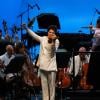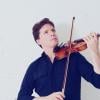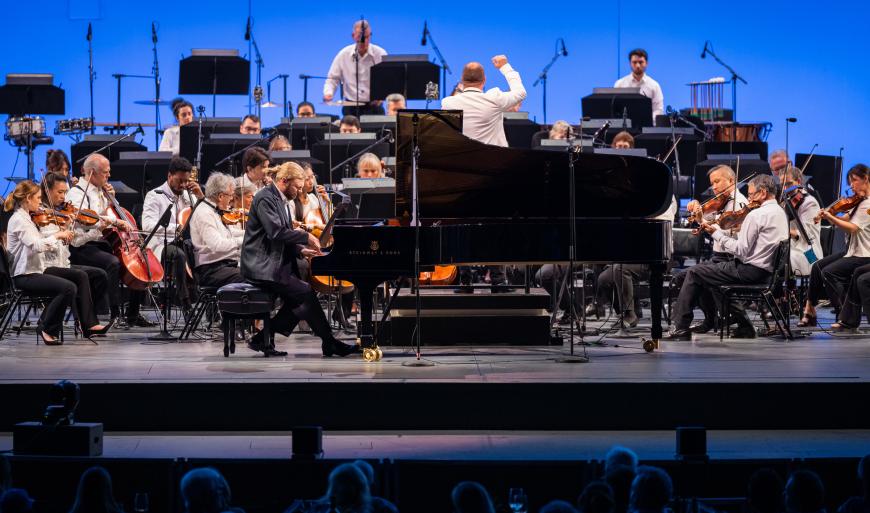
Conductor Ryan Bancroft’s star is rising.
On Tuesday, Aug. 6, he led the Los Angeles Philharmonic at the Hollywood Bowl in a program that set the propulsive punch of Sergei Prokofiev’s Piano Concerto No. 3 in C Major against the tragic scale of Dmitri Shostakovich’s Symphony No. 10 in E Minor.
Born in Los Angeles in 1989, Bancroft just finished his first season as chief conductor of the Royal Stockholm Philharmonic Orchestra and has been principal conductor of the BBC National Orchestra of Wales since 2021. He made his Hollywood Bowl debut in 2023, and if the LA Phil’s management is sharp, it will book Bancroft for future subscription concerts.
Tuesday night’s performance, with soloist Denis Kozhukhin, of Prokofiev’s Third Concerto (finished and premiered in 1921, when the composer was in self-imposed exile in the U.S.) was a juggernaut that contrasted locomotive propulsion with haunting lyricism. The performance never gushed; it was never sentimental. It hit like a right jab wrapped in a velvet glove.
The first movement opens with a wistful, delicate theme from paired clarinets. A moment later, the mood is completely transformed by a thunderstorm of strings and the roof-shaking entrance of the piano. It’s one of the great moments in the concerto repertory, and Kozhukhin made the most of it.
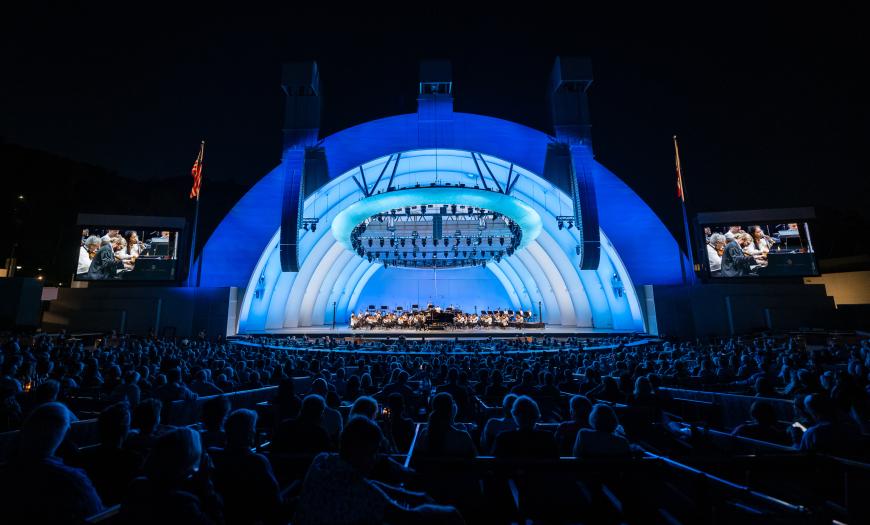
Notes sprayed from the piano like machine-gun bursts. Passages of intense instrumental confrontation gave way to islands of serenity, including a brief rhapsodic interlude for oboe and castanets. It all built to such an explosive climax that, even though it was only the end of the first movement, the enthusiastic applause was justified.
Watching Bancroft conduct, using his hands instead of a baton, it’s easy to draw comparisons to Pierre Boulez — the subtle bending of the wrists, the elegant gestures with the fingers, which Bancroft employed during the poetic second movement’s set of variations.
Then the butterfly stung like a bee as Bancroft, Kozhukhin, and the orchestra turned the volume and intensity up to 11 in the final movement and knocked it out of the Bowl.
In 1936, Prokofiev returned to the Soviet Union to stay. Shostakovich had never left. Separately, they endured the horrors of the Nazi invasion and the madness of Stalin.
Shostakovich, famously, was denounced for his modernist opera Lady Macbeth of Mtsensk and then “rehabilitated” thanks to his more overtly populist Fifth Symphony.
His Symphony No. 10 was first performed on Dec. 17, 1953, nine months after Stalin’s death. According to Solomon Volkov’s biography of Shostakovich, Testimony (which is of doubtful authenticity), the composer is reported to have said that the 10th Symphony is about the Stalin years. “The second part, the scherzo, is a musical portrait of Stalin, roughly speaking.”
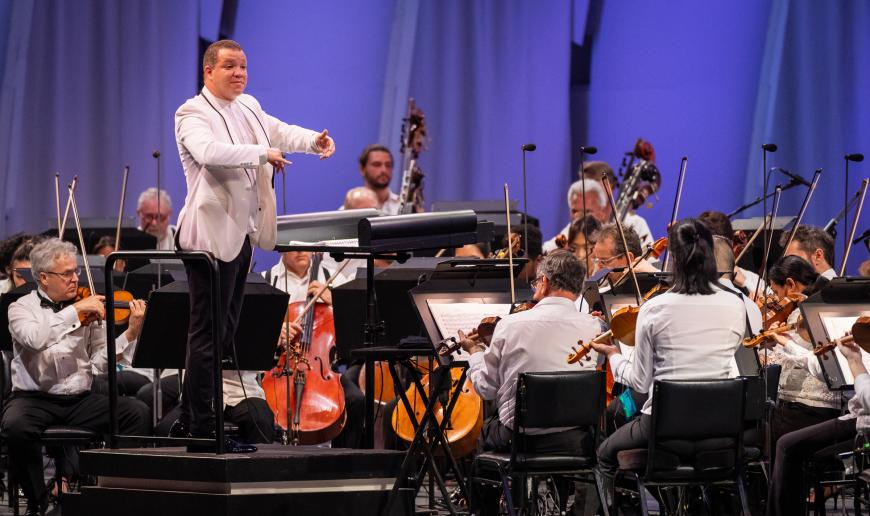
Whether that quote is accurate or not, the work can be heard as a symphony of ghosts, the tale of a survivor. Gustav Mahler may have used the symphonic form as a way to grapple with the cosmos and issues of life, death, and resurrection, but for Shostakovich, those issues were a lot more immediate.
The 10th Symphony is Mahler-like in scale but with a distinctly Russian-Soviet accent. The first movement of the 50-minute work is as long as the other three movements combined. The piece is a deeply emotional, panoramic journey that Bancroft led with assuredness. The orchestra produced an entire spectrum of instrumental colors and contrasting rhythms. Passages as light as dewdrops on a spider’s web gave way to screams of terror in the strings, brass that bellowed, and plaintively pleading winds.
The effect was both exhausting and exciting, a tour de force in every way. This was not your average summer night at the Bowl.


